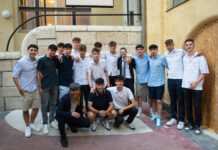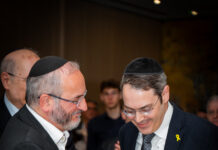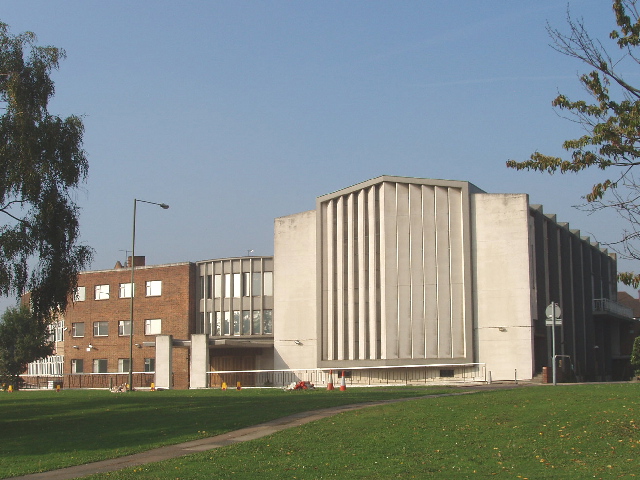
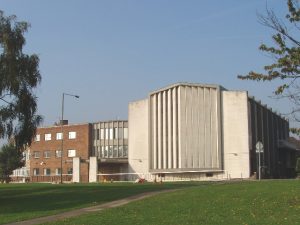
By David Saffer
FINCHLEY United Synagogue (known as Kinloss Synagogue) is a shining light of north west London’s Jewish community.
With a membership of around 1,000 families, a plethora of activities takes place weekly.
Rabbi Jeremy Lawrence has led Kinloss since August 2014, succeeding Rabbi Ephraim Mirvis just under a year after his appointment as Chief Rabbi.
“In coming back to London to the challenge of following Rabbi Mirvis, I came into a congregation that wanted to succeed with its rabbi,” said Rabbi Lawrence. “I feel there is a completion of a certain circle and the chance to carry on great work started by illustrious predecessors.
“While that certainly entails a difficult transition from people who loved my predecessor and felt a certain hesitancy towards change, it is warming to join a community that knows how to love and work with a rabbi towards long-term congregational development.
“Rabbi Mirvis has always been available to me for support and I value the insight he has to the quirks and nuances of the Kinloss community. He provides remarkably well thought-out leadership, but is very professional in giving me the necessary freedom to learn for myself.”
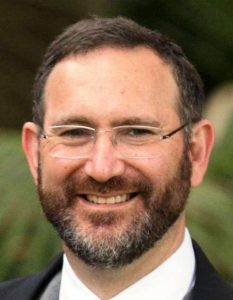
How does Rabbi Lawrence view his post in the middle of his third year?
“One of the great strengths and challenges of this congregation is its diversity and size,” he explained. “It is certainly one of the most vibrant London US communities with around 1,000 people on a regular Shabbat morning between all the services.
“Apart from main and minyan services, we have a hashkama and Persian service, youth and children’s services, ‘minyan on the move’ and an occasional family service.
“The diversity comes from many long-standing traditional US members. Several come for High Holy-days and significant anniversaries. Many regulars are kosher and shomrei Shabbat and attend regular shiurim, congregants who are on the ‘conservative’ right of centre for whom tradition is a paramount value, many of whom have been to yeshivot and sem, advocating a more modern Orthodoxy.
“While this creates a healthy tension in the community, it also gives the opportunity for phenomenal vibrancy where we try to accommodate as many different legitimate expressions of Orthodoxy as the London Beth Din will permit.”
Rabbi Lawrence, who is married with four children, studied jurisprudence at Oxford University. Lay and informal leadership posts included the Association of Jewish Sixth Formers.
He cites former Chief Rabbi Lord Jonathan Sacks, for whom he was a research assistant for the 1990 Reith lectures, as an inspiration alongside Rabbis Alan Kimche and Jeremy Rosen, when he enrolled in the Kalms Fellowship programme to train young English graduates to serve in Anglo-Jewry as rabbis.
He spent two years as deputy head of Jewish studies at Carmel College, after returning to England on completing his semichah and with no full-time rabbinic positions available.
He took Lord Sacks’ advice and became senior minister at Auckland Hebrew Congregation in New Zealand then took up the same post at the Great Synagogue, Sydney, Australia.
Uncannily, several predecessors also served these Australasian communities, including Rabbi Israel Porush, who left for The Great in 1964, and Rabbi Avraham Rosenfeld.
Senior rabbis here have included Rabbi Benjamin Gelles, the late Rabbi Isaac Bernstein as well as Chief Rabbi Mirvis.
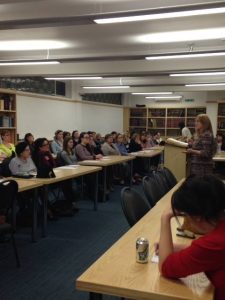
The shul has also demonstrated it is prepared to move with the times, especially in the participation of women.
Rabbi Lawrence said: “The main service is traditional and loved by its aficionados, but there is a recognition that it alone cannot sustain Kinloss into the future.
“The minyan service, which celebrates its 25th anniversary this year, is particularly challenged by those who want a peer-led traditional service on the one hand, true to its inception and those who would like to see it move a little with the times in allowing a greater modernity in its Orthodoxy.
“Many younger families who attend the minyan have women who would like to play a greater role in halachic services for themselves. We have enthusiastic women’s megilah readings on Purim, started by Chief Rabbi Mirvis and on Shavuot started in my tenure. One of the most successful programmes initiated by the women themselves was ‘Tweet the Torah’ on Simchat Torah where 54 women addressed one parshah each in a minute.
“The challenge is to satisfy the demand of congregants without competing against ourselves when members, particularly our youngest families, are working hard raising their children and are also involved in many other communal committees.”
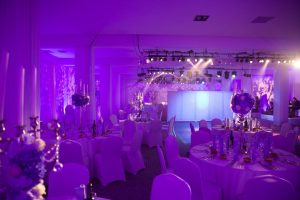
Kinloss has wide-ranging social and educational programmes in addition to holding communal events and smachot in its spectacular banqueting suite.
The Morasha School and Sharon kindergarten are also based on site, something Rabbi Lawrence is particularly enthusiastic about.
“To get to know the children and for them to get to know me and have direct input into our young families’ Jewish education is an amazing opportunity. It’s a great thrill walking through shul on a Shabbat morning, when kids tell me they saw me in school and parents give me reflections on what I have told their children.”
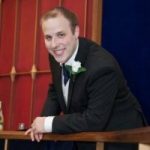
He sees Jewish religious leadership as not solely about services and sermons and being a master of religious ceremonies within the shul precinct, but about a much more holistic integration in a family’s Jewish life.
“It’s great that I have the opportunity to bring the children and adults together in the shul and that I am part of their life at significant celebrations and commemorations.”
Rabbi Lawrence extolled the virtues of a project initiated within the last year entitled a “family friendly service”, which goes under the banner of davening with children.
“It’s a halachic Shabbat shacharit service where we sing pretty much everything with children aged six to 11 once a month. Children can move from one side of the mechitzah to the other, chat to their parents, where we have questions and answers for families to discuss together and divrei Torah from the kids. We take out the Torah so families can share the experience, hear what the parshah is about and daven together.
“It is this trans-generational communal Judaism which is a difficult mix in ‘cathedral’-like synagogues but we have brought it into the ‘family friendly service’ in a way that has been lapped up, particularly by our Morasha parents.”
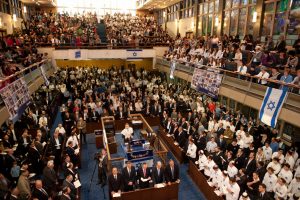
Discussing educational initiatives, Rabbi Lawrence singled out a day of inspiration on the Shabbat after Yom Ha’atzmaut last year when 15 rabbis took part in shiurim and panels via a live video link. The event is to be repeated on Sunday, May 7 with a “50 Years of Jerusalem” theme.
Rabbi Lawrence also noted that for a Jewish community, the core to Judaism is learning with Torah and the people of Israel at its heart.



